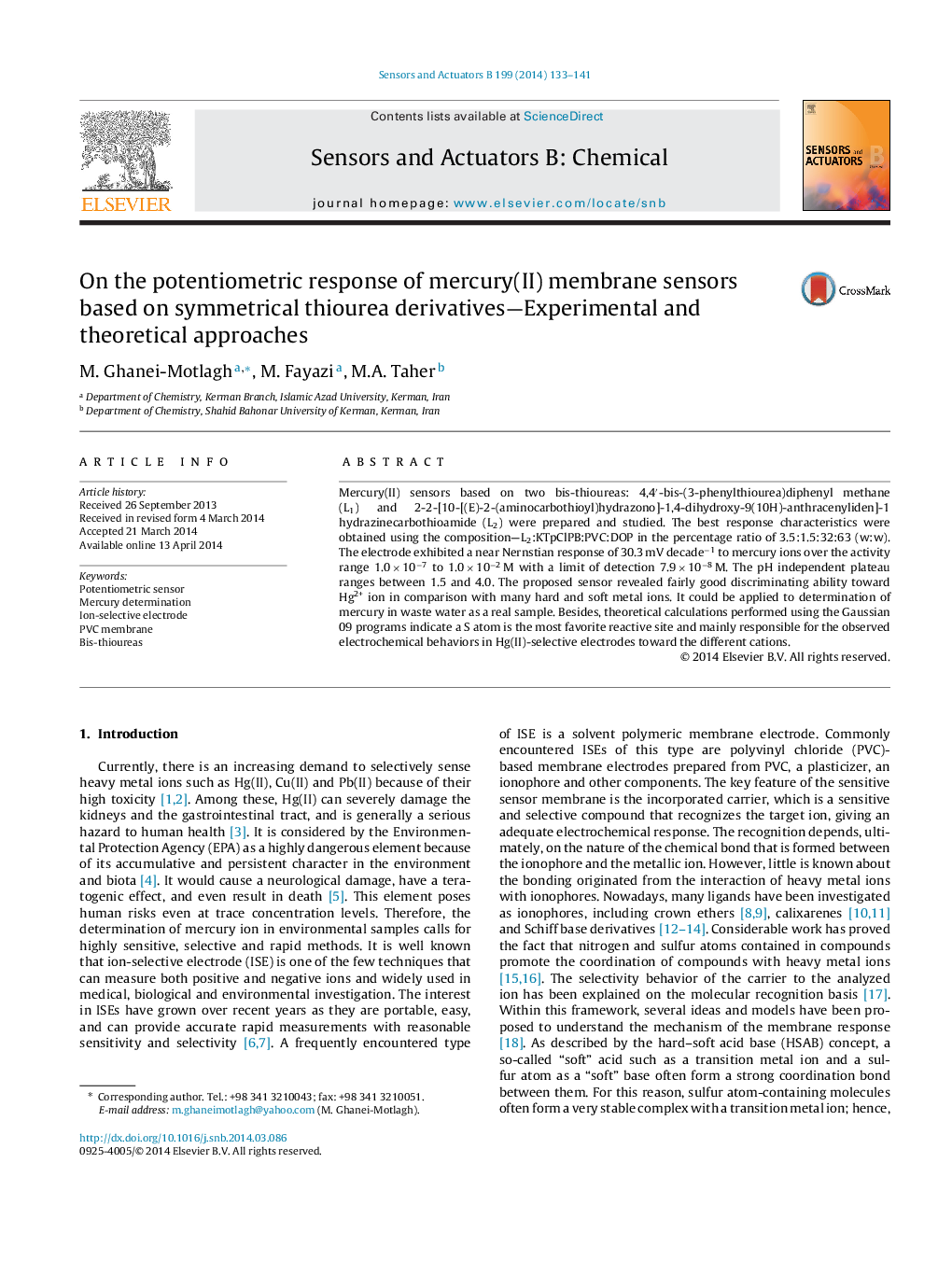| Article ID | Journal | Published Year | Pages | File Type |
|---|---|---|---|---|
| 7147018 | Sensors and Actuators B: Chemical | 2014 | 9 Pages |
Abstract
Mercury(II) sensors based on two bis-thioureas: 4,4â²-bis-(3-phenylthiourea)diphenyl methane (L1) and 2-2-[10-[(E)-2-(aminocarbothioyl)hydrazono]-1,4-dihydroxy-9(10H)-anthracenyliden]-1 hydrazinecarbothioamide (L2) were prepared and studied. The best response characteristics were obtained using the composition-L2:KTpClPB:PVC:DOP in the percentage ratio of 3.5:1.5:32:63 (w:w). The electrode exhibited a near Nernstian response of 30.3Â mV decadeâ1 to mercury ions over the activity range 1.0Â ÃÂ 10â7 to 1.0Â ÃÂ 10â2Â M with a limit of detection 7.9Â ÃÂ 10â8Â M. The pH independent plateau ranges between 1.5 and 4.0. The proposed sensor revealed fairly good discriminating ability toward Hg2+ ion in comparison with many hard and soft metal ions. It could be applied to determination of mercury in waste water as a real sample. Besides, theoretical calculations performed using the Gaussian 09 programs indicate a S atom is the most favorite reactive site and mainly responsible for the observed electrochemical behaviors in Hg(II)-selective electrodes toward the different cations.
Related Topics
Physical Sciences and Engineering
Chemistry
Analytical Chemistry
Authors
M. Ghanei-Motlagh, M. Fayazi, M.A. Taher,
